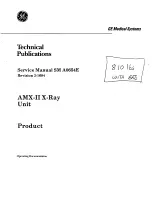
S530 Parametric Test System Administrative Guide
Section 4: Maintenance
S530-924-01 Rev. D / September 2017
4-3
Types of electrical hazard tasks
Live circuit
type
Description
1
Equipment is fully de-energized.
2
Equipment is energized. Energized circuits are covered or insulated.
NOTE 41: Type 2 work includes tasks where the energized circuits are or
can be measured by placing probes through suitable openings in the
covers or insulators.
3
Equipment is energized. Energized circuits are exposed and inadvertent
contact with uninsulated energized parts is possible. Potential exposures
are no greater than 30 V
RMS
, 42.4 V
peak
, 60 V DC, or 240 VA in dry
locations.
4
Equipment is energized. Energized circuits are exposed and inadvertent
contact with uninsulated energized parts is possible. Potential exposures
are greater than 30 V
RMS
, 42.4 V
peak
, 60 V DC, or 240 VA in dry locations.
Potential exposures to radio-frequency currents, whether induced or via
contact, exceed the limits in SEMI S2, Appendix 5, Table A5-1.
Repair and replacement
Keithley Instruments offers a fee-based service agreement with all S530 systems. Under this
agreement, a field service engineer will either repair or replace equipment. For more information
about this service agreement, contact Keithley Instruments at 1-800-935-5595.
For additional information about specific parts, operations, and maintenance of Keithley instruments,
refer to the documentation for the instrument for details before attempting to replace or repair any
equipment. Also, refer to the supplied documentation that is on the Keithley Instruments CD-ROM
that was shipped with your purchase.
Heavy instrument removal and installation
When installing or removing equipment heavier than 40 pounds, use a mechanical lifting device. If
there is an instrument mounted below the heavy instrument, it must be removed to provide clearance
for the lifting forks. Refer to the lifting device operating manual for proper usage.
Remove system power
Severe personal injury or death due to electrical shock or electrocution may result if power
is not removed before moving, removing, or installing equipment. Do not attempt to perform
these procedures unless you are qualified to do so and are wearing personal protective
equipment (PPE) suitable for voltages greater than 40 V AC.
Make sure the system and instruments that are being installed, moved, or removed are
turned off with all power source/cables unplugged.
















































